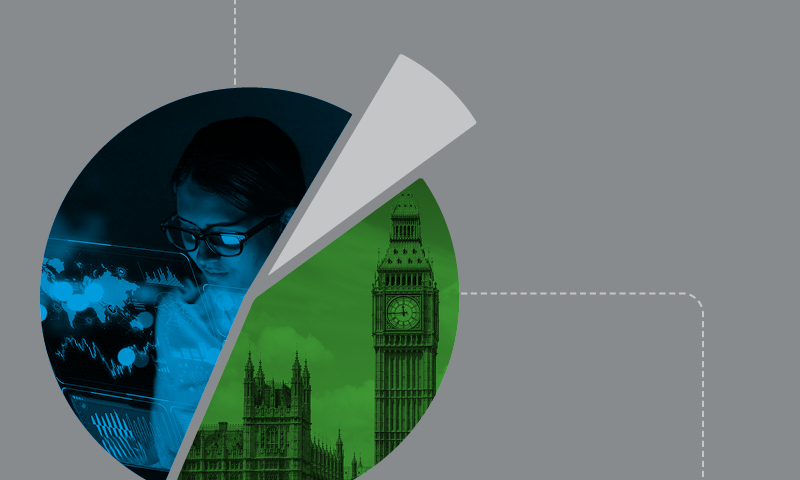22 November 2023
Jeremy Hunt delivered his Autumn Statement today, with the latest Office for Budget Responsibility (OBR) forecast still painting a picture of a stagnating economy. Despite this, the measures announced, all 110 of them, amount to a net giveaway of about 0.5% GDP aimed at boosting growth.
Many of the measures were supply-side focused, targeted at improving productivity and stimulating investment with a view to addressing the UK’s well-documented challenges in both areas.
Key highlights are listed below:
NIC reductions (employees) – the rate of employee NIC will be reduced from 12% to 10% from 6 January 2024, benefiting an estimated 27 million employees. It is understood that the employer NIC rate will remain unchanged at 13.8%.
As a result of this change the average-paid worker on £35,400 will receive a tax cut in 2024-25 of over £450.
NIC reductions (self-employed) – the self-employed will benefit from both a simplification of the National Insurance system, with flat rate Class 2 contributions of £3.45 per week being abolished in full, and a reduction in the headline rate of Class 4 to 8% (from 9%) on profits between £12,570 and £50,270.
These changes will be effective from April 2024 and the expectation is that these measures combined will cost the treasury £725m in 2024-25.
National living wage and national minimum wage – increases in both the national living wage and the national minimum wage have also been announced. These represent the highest ever single increases.
Full expensing – as anticipated, full expensing relief for capital investment by companies in plant and machinery has been made permanent, proudly announced as the biggest business tax cut in modern British history. Originally introduced from 1 April 2023 as a three-year temporary measure, this is forecast to be the most expensive measure in the Autumn Statement, expecting to cost over £10bn per annum.
The real beneficiaries of this announcement will be those companies undertaking large capex projects, although the certainty regarding the capital allowance regime will be welcomed across the board.
The government also announced a consultation extending full expensing relief to leased assets.
R&D tax reliefs – following a review of the R&D tax relief schemes, the chancellor confirmed a merger of the two R&D tax reliefs into a single scheme will go ahead, with effect from 1 April 2024.
The notional tax rate applied to loss-makers will be lowered from 25% in the current RDEC scheme to 19%.
The intensity threshold which provides additional support for loss making R&D-intensive SMEs will be reduced from 40% to 30%. This is expected to bring c. 5,000 more SMEs into the scope of the additional relief.
VAT and indirect tax – announcements related to VAT and duties were conspicuously absent from the chancellor’s speech, apart from a freeze on alcohol duty and some increases to the duty rates on hand-rolling tobacco.
Lower profile tweaks to VAT and other indirect taxes are expected to emerge in the published detail following the chancellor’s speech.
The economist's view
Thomas Pugh, economist at RSM UK, said: ‘The latest OBR forecast still paints a picture of a stagnating economy. And while the measures announced today will provide a boost to demand in the short term, it’s the changes to the supply side that could have a bigger, and welcome impact, on longer term economic growth.
Indeed, the OBR estimates that the limited reform of the planning system, encouraging business investment and efforts to raise the participation rate will boost the potential output of the economy by 0.3% in five years’ time.
This helps to mitigate the risk that tax cuts will boost demand and prove inflationary (the OBR estimates that they will boost demand by 0.1%) and that interest rates would have to rise in response. But most of the reason the chancellor has been able to cut taxes is because he has kept departmental spending steady, meaning a real-terms reduction to spending to fund tax cuts. This limits the aggregate impact on demand and inflation.
As a result, the Bank of England is unlikely to react to today’s changes. We still expect interest rates to remain at 5.25% until the second half of 2024, before they gradually fall to around 4.5% by the end of the year.
Sign up to our tax insights to receive tomorrow’s detailed analysis.









